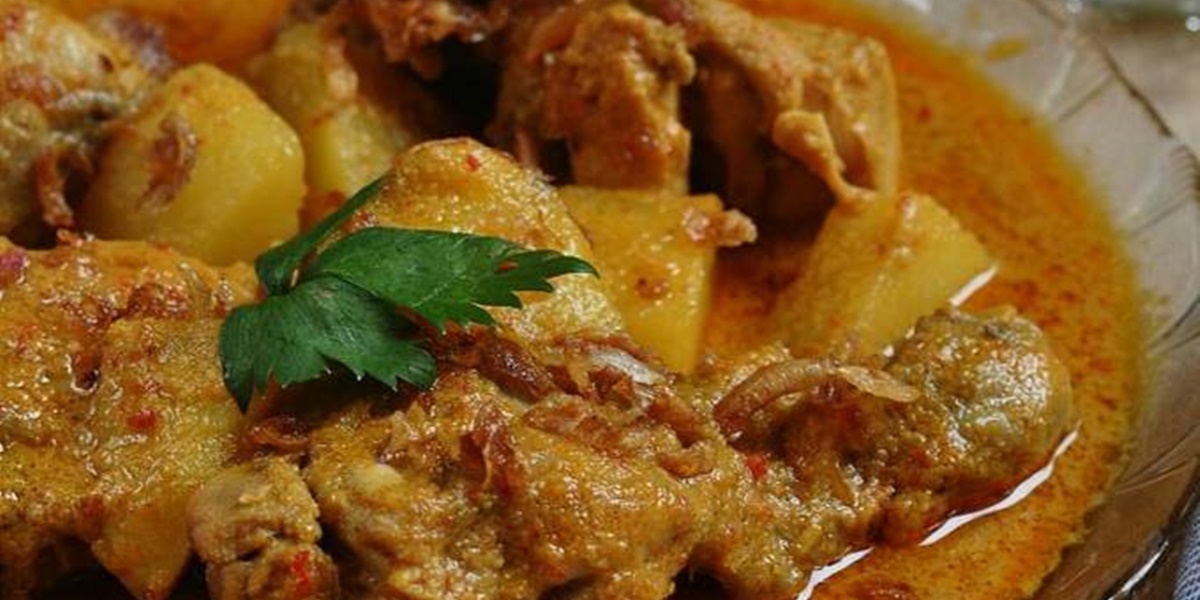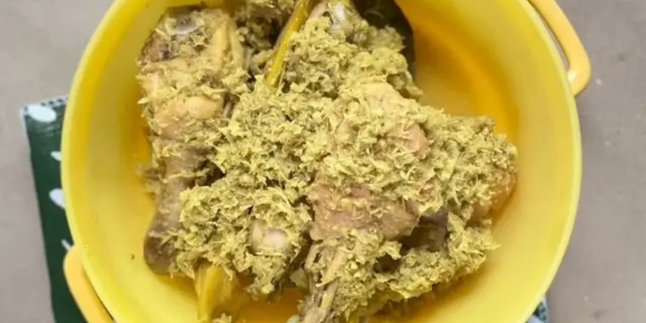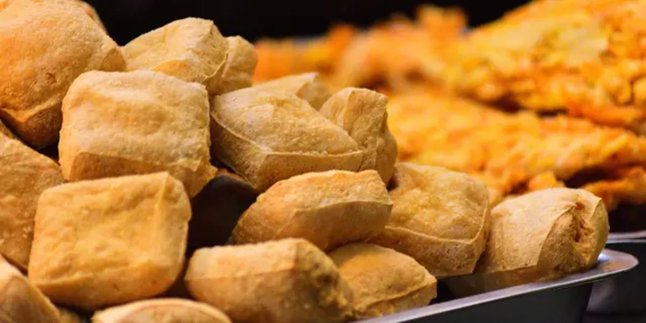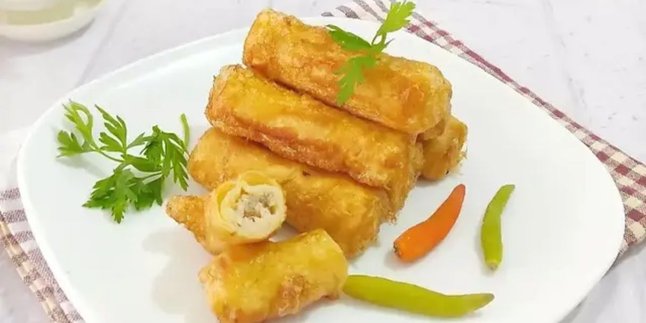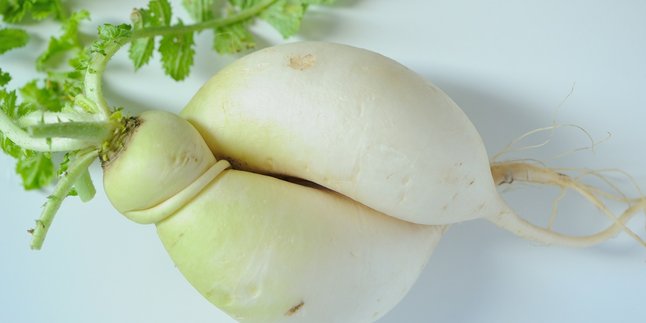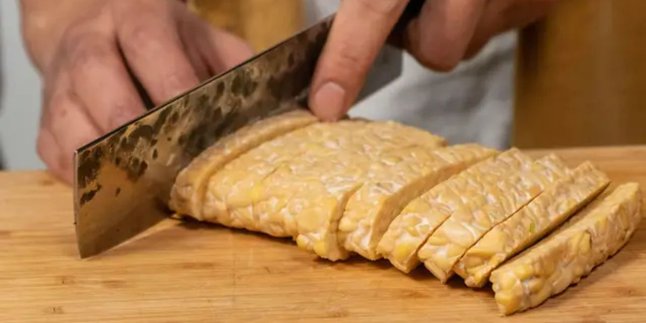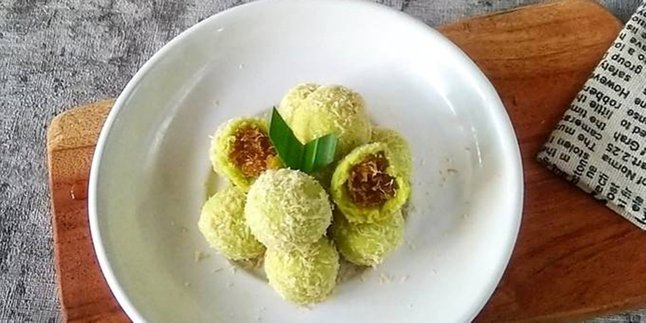Opor ayam is one of the typical dishes that is always present during the celebration of Eid al-Fitr in Indonesia. Its presence is not just a complement to the dining table, but it has also become part of a tradition passed down through generations.
This coconut milk soup dish has a distinctive savory flavor, making it a favorite in various regions. Almost every household serves opor ayam as the main dish when gathering with family in a warm atmosphere of togetherness.
However, behind its deliciousness, the history of opor ayam holds a long and interesting trail to explore. This dish is not merely an original creation from Indonesia, but rather a part of cultural acculturation that has taken place over centuries.
Check out the complete information summarized from various sources, Thursday (3/4/2025).
1. The Historical Trail of Opor Ayam
The history of chicken opor can be traced through the influences of three major cultures that interacted with the archipelago, namely India, Arabia, and China. This dish did not arise from a single culture but is the result of an acculturation process that took place over centuries. The combination of cooking techniques and the use of spices from various nations has shaped chicken opor as it is known by the Indonesian people today.
In Indonesia, there are two most popular types of chicken opor, namely chicken opor with white coconut milk broth and chicken opor with yellow broth. Each of these variants has different flavors, colors, and histories, reflecting the cultural influences that have shaped them. Chicken opor with white coconut milk broth is closely associated with the Chinese Peranakan community in Indonesia. This dish has a thick and savory broth dominated by the aroma of coconut milk, creating a flavor that is soft yet rich. It is often served with lontong or ketupat, reminiscent of traditional Chinese community dishes such as lontong Cap Go Meh, which is commonly served during the Cap Go Meh celebration.
The presence of white coconut chicken opor in the culinary landscape of the archipelago shows how Chinese culture has influenced cooking techniques and the ingredients used. The abundant use of coconut milk in this dish aligns with the tendency of Peranakan Chinese cuisine to often adapt local ingredients while still maintaining their original characteristics. Unlike the white coconut milk opor, the yellow broth variant of chicken opor reflects the influence of Indian culture. The distinctive yellow color produced by turmeric is a main feature of this dish, while the use of cumin and other spices provides a sharper aroma and flavor. Turmeric and cumin are spices commonly used in Indian cuisine, especially in spiced dishes like curry.
In addition to its distinctive color and aroma, yellow chicken opor also has a more complex taste compared to the white coconut milk variant. This dish is often served on various special occasions, especially during the celebration of Eid al-Fitr in Indonesia. The combination of coconut milk, turmeric, and other spices makes yellow chicken opor an appetizing dish that further enriches the culinary heritage of the archipelago.
2. The Entry of Opor Ayam into the Archipelago Through Coastal Routes
The early spread of this dish in Indonesia cannot be separated from the role of Arab and Indian traders who came to the Archipelago through maritime trade routes. Since the 16th century, the coastal areas of Sumatra, Java, and the Strait of Malacca have become centers of cultural interaction, where various foreign influences began to mix with local traditions. In this process, culinary practices also underwent transformation, including in cooking methods and the use of ingredients that are more readily available in the Indonesian archipelago.
One interesting form of assimilation in the history of opor ayam is the influence from the Mughal Empire in India, which is famous for its qorma dish, a spiced dish cooked with milk or yogurt as the base for the sauce. However, in Indonesia, this ingredient was replaced with coconut milk, which is more easily obtained from the coconuts that grow abundantly in tropical regions. This innovation then became the main characteristic of the opor ayam known today.
Furthermore, with the increasing spread of Islam in the Archipelago, spice-based dishes like opor ayam became more popular. Many Islamic kingdoms in Indonesia, such as the Sultanate of Aceh, Demak, and Mataram, adopted various culinary traditions from India and the Middle East, then adapted them to local ingredients and cooking techniques.
3. Spiced Chicken Opor Recipe
Main Ingredients:
- 1 chicken (choose free-range chicken for a richer flavor, cut into several pieces)
- 500 ml thick coconut milk (from 1 coconut)
- 700 ml thin coconut milk (from the first squeeze of the coconut or can use diluted instant coconut milk)
- 2 bay leaves for a distinctive aroma
- 3 kaffir lime leaves (remove the stems to avoid bitterness)
- 1 stalk lemongrass (crushed to release its aroma)
- 3 cm galangal (crushed)
- 2 tablespoons cooking oil (for sautéing the spices)
- Salt and sugar to taste to balance the flavor
Ground Spices:
- 6 shallots (to provide natural sweetness)
- 4 cloves garlic (to enhance aroma and deliciousness)
- 3 candlenuts (toast first for a richer flavor)
- 1 teaspoon coriander (toast to release a stronger aroma)
- ½ teaspoon ground pepper for a slight warm spiciness
- 3 cm turmeric (lightly burned for a brighter color and stronger aroma)
- 2 cm ginger (provides a slight warmth and enriches the broth flavor)
How to Cook Chicken Opor
1.Preparing the Chicken
- Wash the chicken thoroughly with running water, then drain.
- For a richer flavor, the chicken can be fried first until half-cooked. This process also makes the chicken texture firmer when cooked in coconut milk.
2.Sautéing the Spices
- Heat cooking oil in a large pan or pot over medium heat.
- Sauté the ground spices until fragrant and cooked, indicated by the spices changing color to darker and oil starting to separate from the sauté.
- Add bay leaves, kaffir lime leaves, lemongrass, and galangal. Stir well to enhance the aroma and allow it to infuse into the spices.
3.Cooking the Chicken with Thin Coconut Milk
- Add the chicken pieces to the pan, stir until the chicken is evenly coated with the sautéed spices.
- Pour in the thin coconut milk gradually, then stir gently to ensure the spices are well mixed.
- Cook over low heat until the chicken is tender and the spices are fully absorbed into the meat.
4.Adding Thick Coconut Milk
- Once the chicken is tender enough, add the thick coconut milk. Stir gently so that the coconut milk does not break and the sauce remains smooth.
- Cook on low heat while occasionally stirring. This process is important to ensure that the opor sauce remains thick and does not clump.
- Add salt and sugar to taste.
5. Serving Chicken Opor
- Once the sauce starts to thicken and the chicken is fully cooked, turn off the heat.
- Let the chicken opor sit for a while before serving so that the spices can infuse better.
- Serve the chicken opor in a serving bowl and sprinkle fried shallots on top to enhance the aroma and add a crunchy texture.
- Chicken opor is best served with ketupat, lontong, or warm white rice.
(kpl/ses)
Disclaimer: This translation from Bahasa Indonesia to English has been generated by Artificial Intelligence.
